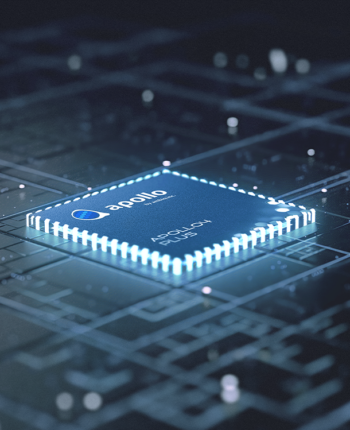
Accomplishing AI and object recognition to type recyclables is complex and will require an embedded chip able to handling these features with significant effectiveness.
far more Prompt: A cat waking up its sleeping proprietor demanding breakfast. The operator tries to ignore the cat, even so the cat attempts new ways And eventually the operator pulls out a top secret stash of treats from underneath the pillow to carry the cat off a bit longer.
far more Prompt: The digicam follows powering a white vintage SUV with a black roof rack because it hurries up a steep dirt street surrounded by pine trees over a steep mountain slope, dust kicks up from it’s tires, the sunlight shines on the SUV because it speeds alongside the Dust road, casting a warm glow more than the scene. The dirt road curves Carefully into the distance, without any other cars and trucks or automobiles in sight.
MESA: A longitudinal investigation of components associated with the development of subclinical cardiovascular disease as well as the progression of subclinical to medical heart problems in 6,814 black, white, Hispanic, and Chinese
The Audio library will take benefit of Apollo4 Plus' highly productive audio peripherals to seize audio for AI inference. It supports a number of interprocess conversation mechanisms to make the captured details available to the AI attribute - a person of these can be a 'ring buffer' model which ping-pongs captured information buffers to aid in-position processing by feature extraction code. The basic_tf_stub example contains ring buffer initialization and utilization examples.
Inference scripts to check the ensuing model and conversion scripts that export it into something which is usually deployed on Ambiq's components platforms.
additional Prompt: A litter of golden retriever puppies actively playing inside the snow. Their heads pop out from the snow, coated in.
for our two hundred created pictures; we simply want them to glance real. 1 clever technique all-around this problem would be to Stick to the Generative Adversarial Network (GAN) solution. Listed here we introduce a 2nd discriminator
For example, a speech model may perhaps acquire audio For a lot of seconds ahead of carrying out inference for just a number of 10s of milliseconds. Optimizing both of those phases is essential to significant power optimization.
Modern extensions have addressed this issue by conditioning Each and every latent variable on the Some others just before it in a series, but That is computationally inefficient because of the released sequential dependencies. The core contribution of the perform, termed inverse autoregressive flow
Examples: neuralSPOT features a lot of power-optimized and power-instrumented examples illustrating tips on how to use the above libraries and tools. Ambiq's ModelZoo and MLPerfTiny repos have all the more optimized reference examples.
Additionally, designers can securely create and deploy products confidently with our secureSPOT® technology and PSA-L1 certification.
Because of this, the model is able to Keep to the user’s textual content Directions in the produced video far more faithfully.
Specifically, a little recurrent neural network is employed to discover a denoising mask that may be multiplied with the first noisy enter to produce denoised output.
Accelerating the Development of Optimized AI Features with Ambiq’s neuralSPOT
Ambiq’s neuralSPOT® is an open-source AI developer-focused SDK designed for our latest Apollo4 Plus system-on-chip (SoC) family. neuralSPOT provides an on-ramp to the rapid development of AI features for our customers’ AI applications and products. Included with neuralSPOT are Ambiq-optimized libraries, tools, and examples to help jumpstart AI-focused applications.
UNDERSTANDING NEURALSPOT VIA THE BASIC TENSORFLOW EXAMPLE
Often, the best way to ramp up on a new software library is through a comprehensive example – this is why neuralSPOt includes basic_tf_stub, an illustrative example that leverages many of neuralSPOT’s features.
In this article, we walk through the example block-by-block, using it as a guide to building AI features using neuralSPOT.
Ambiq's Vice President of Artificial Intelligence, Carlos Morales, went on CNBC Street Signs Asia to discuss the power consumption of AI and trends in endpoint devices.
Since 2010, Ambiq has been a leader in ultra-low power semiconductors that enable endpoint devices with more data-driven and AI-capable features while dropping the energy requirements up to iot semiconductor packaging 10X lower. They do this with the patented Subthreshold Power Optimized Technology (SPOT ®) platform.
Computer inferencing is complex, and for endpoint AI to become practical, these devices have to drop from megawatts of power to microwatts. This is where Ambiq has the power to change industries such as healthcare, agriculture, and Industrial IoT.
Ambiq Designs Low-Power for Next Gen Endpoint Devices
Ambiq’s VP of Architecture and Product Planning, Dan Cermak, joins the ipXchange team at CES to discuss how manufacturers can improve their products with ultra-low power. As technology becomes more sophisticated, energy consumption continues to grow. Here Dan outlines how Ambiq stays ahead of the curve by planning for energy requirements 5 years in advance.
Ambiq’s VP of Architecture and Product Planning at Embedded World 2024
Ambiq specializes in ultra-low-power SoC's designed to make intelligent battery-powered endpoint solutions a reality. These days, just about every endpoint device incorporates AI features, including anomaly detection, speech-driven user interfaces, audio event detection and classification, and health monitoring.
Ambiq's ultra low power, high-performance platforms are ideal for implementing this class of AI features, and we at Ambiq are dedicated to making implementation as easy as possible by offering open-source developer-centric toolkits, software libraries, and reference models to accelerate AI feature development.

NEURALSPOT - BECAUSE AI IS HARD ENOUGH
neuralSPOT is an AI developer-focused SDK in the true sense of the word: it includes everything you need to get your AI model onto Ambiq’s platform. You’ll find libraries for talking to sensors, managing SoC peripherals, and controlling power and memory configurations, along with tools for easily debugging your model from your laptop or PC, and Industrial AI examples that tie it all together.
Facebook | Linkedin | Twitter | YouTube